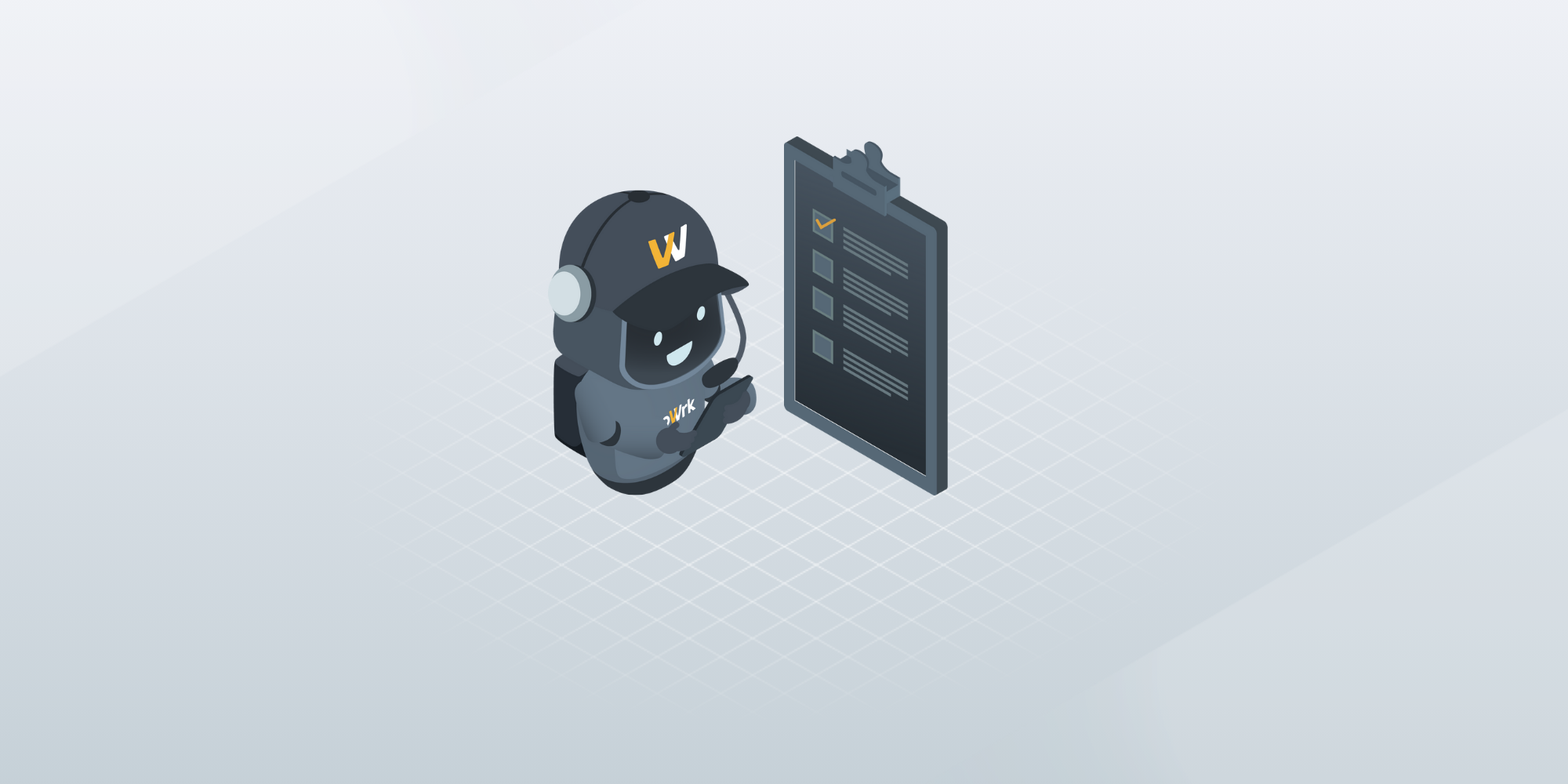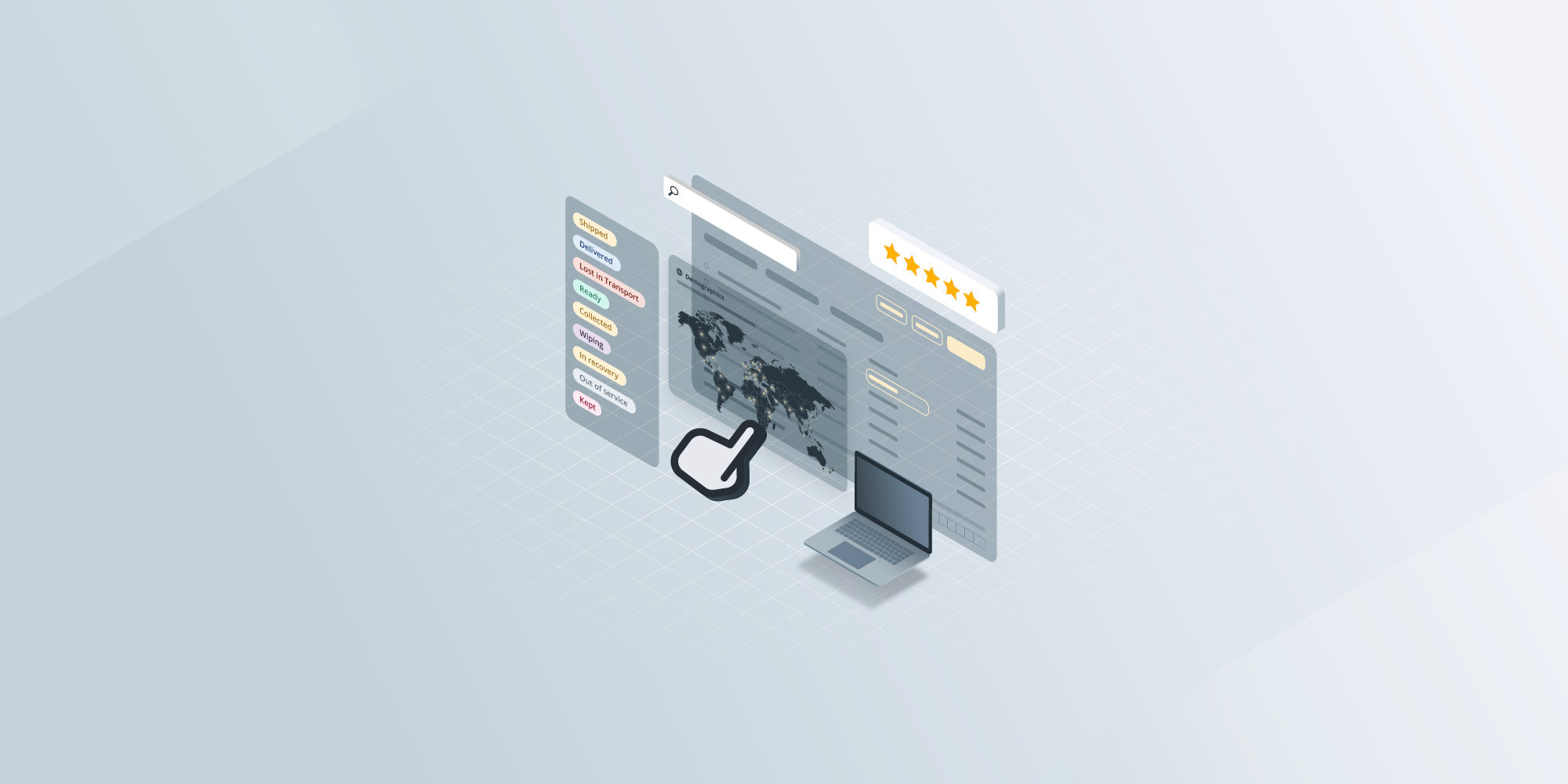What is an asset management system? Ultimate software guide
 Mara Quintanilla
Mara Quintanilla
Distributed teams have changed the corporate landscape and how businesses work. Remote work requires increased visibility over assets and business operations, which is why having an asset management system (AMS) is crucial.
When remote businesses grow, they also increase their human and IT resources. This usually translates into more computers, bigger software requirements, or larger networks. This growth needs to be accounted for, measured, and managed. The easy way to do it is through a digital platform.
Asset management systems allow companies to do a few things. They can oversee hardware and software throughout their lifecycle, reduce downtime, budget effectively, mitigate risks, gain quality insights, and automate workflows.
Despite the benefits, organizations still struggle with asset and inventory tracking. According to a report by Wasp Barcode Technologies, 43% of small businesses do not track their inventory or rely on manual processes.
Ultimately, it gives managers peace of mind. These automated processes allow managers to focus on creating value for their business.
This in-depth guide to asset management systems (AMS) will cover the benefits and types of AMS, how to choose one, and how to implement it. Let’s dive in!
Basics of an asset management system
In simple terms, an asset management system is any process a company uses to track equipment and inventory. Those managed assets are mostly fixed assets, like IT equipment.
Managing assets is crucial to maintaining smooth daily operations because it provides valuable insights into how to allocate resources best.
The importance of an asset management system boils down to efficiency. Not having an AMS or relying on complex systems like spreadsheets is detrimental in the long run.
Proper asset management delivers an accurate, real-time, organized way to oversee company assets. It's easier to deal with lost or stolen items, schedule maintenance, or track depreciation.
For distributed teams that work across continents, remote asset management can eliminate the guesswork and sift through scattered records. Everything in one place makes everything click and frees up time for more efficient working.
The benefits of using an asset management system
Optimized processes for tracking and managing IT assets are critical for streamlined operations. But the benefits continue beyond there. It’s no secret that companies with organized systems and streamlined workflows save time and money. Let's go into more detail regarding AMS benefits:
Improved asset tracking and inventory management
Organizations that use an asset management system always know the location, status, and condition of an asset. Having complete visibility allows them to identify assets that are underutilized or not in use and make informed allocation decisions.
Better asset utilization and allocation
The main purpose of AMS is to keep track of fixed assets. When companies know how assets are used and where they are, they can make better decisions regarding budget and allocation. Also, it’s easy to detect which assets are underused or those that need to be repaired to avoid downtime.
Increased operational efficiency
AMS reduces paperwork and eliminates manual processes, which leads to streamlined operations. The best part is that it frees up time for employees to focus on other critical tasks, so operational efficiency goes up.
Improved maintenance and lifecycle management
Companies that use an asset management system can stay on top of maintenance schedules. This way, firms reduce the likelihood of breakdowns and improve their IT asset lifecycle management. With this information, they can make better decisions regarding investment in new equipment.
Cost savings and ROI
Perhaps the most highlighted aspect of AMS is its ability to reduce companies' costs. Asset management systems streamline existing processes, reduce equipment downtime, and identify underutilized assets. These insights allow companies to understand which assets are more expansive and which give the best ROI.
Types of asset management systems (AMS)
Three common AMS types are cloud-based, on-premise, and hybrid. Selecting the right one for your organization—amid considerations like CMDB vs ITAM—will depend on your budget, company size, and specific requirements.
Here's what to expect from each one:
Cloud-based AMS
It's an platform available over the web that is accessed through an internet connection. The best part of cloud-hosted AMS is scalability. Businesses can expect low infrastructure costs, automatic updates, and easy access from anywhere.
On-premise AMS
On-premise AMS is hosted within an organization's local network using dedicated hardware. This option may be more customizable than cloud-based solutions but has a higher upfront cost due to hardware investment.
Hybrid AMS
A hybrid asset management system combines both cloud-based and on-premise technology. It allows organizations to store sensitive data on local servers while leveraging the scalability of a cloud-based solution.
Factors to consider when choosing an AMS
Your ideal asset management software will depend on what your company’s characteristics are. Smaller businesses might prefer scalability options, while large companies might need a customized solution. Whatever the case, an asset management strategy is crucial; here are some important considerations:
Scalability
An ideal asset management system should be able to grow with your business. That means it can accommodate increased users, devices, and locations. The solution you go with should provide a flexible architecture that can handle new features and capacity expansions.
Integration with other systems
Your chosen asset management software should integrate with your most-used applications. This will enable smooth data flow between systems while reducing manual entry errors and improving overall efficiency.
User-friendliness
A user-friendly interface is not only nice to have but also a great way to minimize effort for employees. Intuitive navigation and clear instructions are some essential features to look for. Comprehensive documentation and responsive customer support can make transitioning to a new asset management system much smoother.
Security
Ensure that your confidential data is guarded against unauthorized access and vulnerabilities. Consider factors like encryption methods, user authentication protocols, and regular software updates to address emerging threats or risks.
Customization
Choosing an asset management system that integrates with the applications that you already use will save time and effort. With a service that adapts to your current needs, data can flow smoothly between systems and minimize manual entry errors.
How to implement an asset management system
Once you’ve made your decision regarding the asset management system that best suits your organization, it’s time to put it to good use. During this process, you will need an implementation strategy that can simplify the transition for all your employees. Remember these steps:
Planning and preparation
Strategizing is critical when adopting new systems. Make sure you have clear insights regarding your business requirements, goals, and objectives. Making a plan that details the timelines and resources needed to implement your AMS can save time throughout the implementation process.
Data migration
Perhaps one of the most tedious aspects, but a crucial step. Data migration involves transferring the data from your existing system into a new one. You need to be extra careful while doing this because inaccurate data can create issues in the future.
Training and adoption
What use is there for any technology if the users don’t know how to operate it? Provide training so your team understands how this new tool works. The adoption process will be more straightforward if they have guidance and clear directions on using the AMS.
Monitoring and optimization
As with any other system, monitoring and optimization are crucial. Regular monitoring can help you identify issues before they happen. Meanwhile, getting feedback from your team can help you optimize the solution and ensure it runs smoothly.
How to find the best option
We can’t emphasize enough the importance of knowing your exact needs because this will help you make accurate decisions that will deliver the best value over time. Here are three tips to help you make an informed decision:
Research and compare different vendors:
Take the time to do the due research. Compare different vendors and what they offer. Focus on those who specialize in your industry and are known for delivering high quality. You can aid this process by checking online reviews or requesting referrals from your network.
Identify your needs and requirements:
Every company has specific and unique needs. That’s why you must consider the type of assets you handle, customization requirements, and scalability options that can guarantee sustained growth.
Avoid surprises at the checkout and ensure you understand all charges related to the AMS you choose. This includes the total cost of ownership, implementation, maintenance, and support costs. Prioritize those systems that offer transparent pricing and verify you understand what you’re paying for.
How Growrk helps you
As we look ahead and remote teams keep growing, companies will need effective systems to track their assets across multiple locations. This level of visibility allows them to use resources more efficiently while reducing costs related to manual processes or old technologies.
After all, these insights give companies a competitive advantage and an opportunity to stay ahead of the game.
GroWrk’s IT asset management platform can help you track and manage your company-owned assets effectively. You can follow real-time status updates, review product history, and keep track of depreciation so you can make informed decisions for your business. Request a Demo today to get started.







